Rodney Russ waited five years for his dream to come true.
Rodney Russ spent five years working with a Chinese shipyard building MV Strannik, an ocean capable expedition yacht/passagemaker. Here he recounts the persistence and tenacity he had to go through to make his dream come true.
It began in Hobart over a drink with my friend and colleague, well-known yachtsman and adventurer Don McIntyre. But if I am honest I could probably trace its origin to youthful daydreaming and possibly too many Jacque Cousteau documentaries.
On this occasion, Don and I were ruing the inevitable changes in the expedition travel industry. We were both involved in the industry, I had leased a Russian ice strengthened research ship and was offering expeditions to NZ sub-Antarctic Islands, the Ross Sea and Russian Far East and Don was working as a lecturer and guide for various expedition travel companies.
Expedition ships were getting larger and larger. Some of the vessels were carrying more than 200 passengers. In our shared opinion the itineraries they were promoting were risk-averse and predictable. That’s not expedition travel in our books. The size and draft of the new vessels significantly restricted where they could go. We felt they were simply becoming another cruise liner.
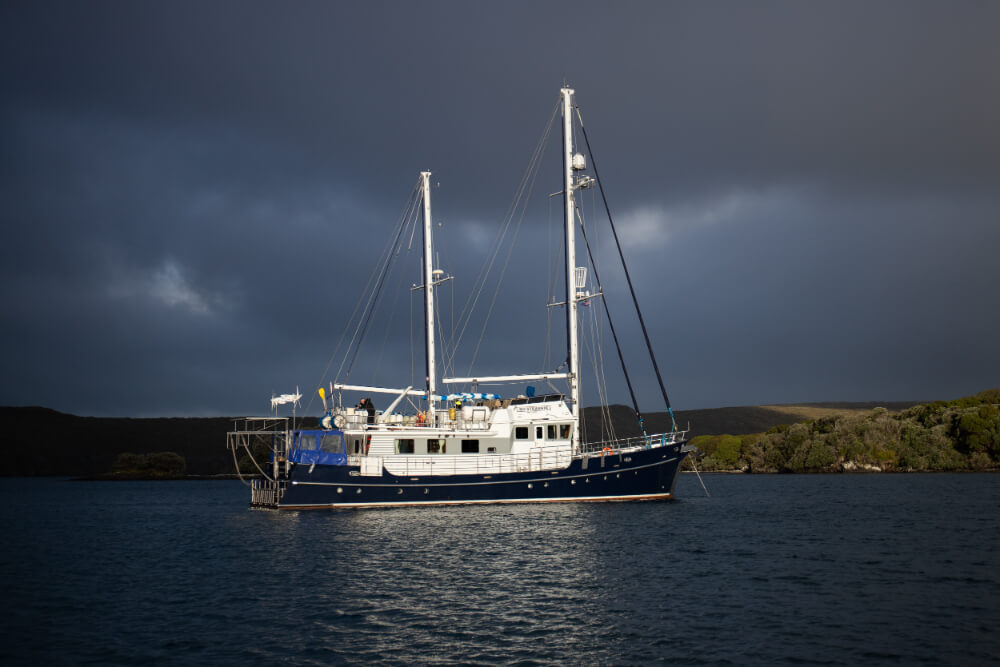
AND SO IT BEGINS
What could we do to put the “Expedition” back into Expedition Travel? Don had recently taken delivery of a George Buehler 462 Diesel Duck from the Sea Horse Marine yard in China. It was called “Ice” and he was cruising in the South Pacific between lecturing assignments. I had seen photos. She had a real presence, a boat that people took notice of.
I casually said to Don what would be the result if we put “Ice” on steroids? We would have to keep it under 24 metres with a maximum of 12 passengers, otherwise the rules and regulations would suffocate the project before we even started. Don said I think we would have the perfect expedition yacht/passage maker. The rest as they say is history but I think it’s worth telling, either as a warning to anybody thinking of doing it or as an inspiration for those who believe they can
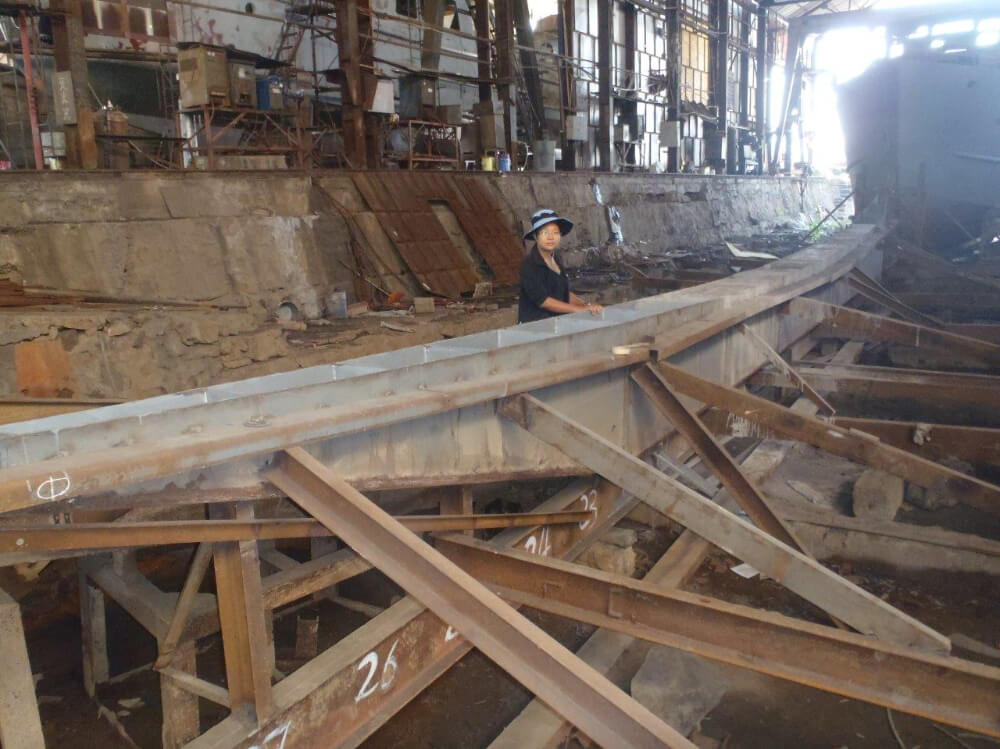
The late George Buehler is known in the cruising world for his book – The Troller Yacht Book. How to cross oceans without getting wet or going broke. If the reader is interested in passage making, then this book is a bible of what to do and what not to do. He is perhaps best known for his long range motorsailer designs which are affectionately known as Diesel Ducks. Collectively Diesel Ducks around the world have clocked up hundreds of thousands of passage-making miles. Diesel Ducks have been built in backyards and by professional shipyards on several continents but one yard is synonymous with Diesel Ducks. Sea Horse Marine in Zhuhai, owned by Bill and Stella Kimley, has built and commissioned more steel Diesel Ducks than any other yard in the world.
Don agreed to approach George and ask him about the feasibility of extending his popular 462 model to 24 metres, which he did for us. With plans in hand, I approached a couple of yards including Sea Horse Marine for expressions of interest. Bill’s feedback and suggestions were invaluable and based on that we asked him for a quote.
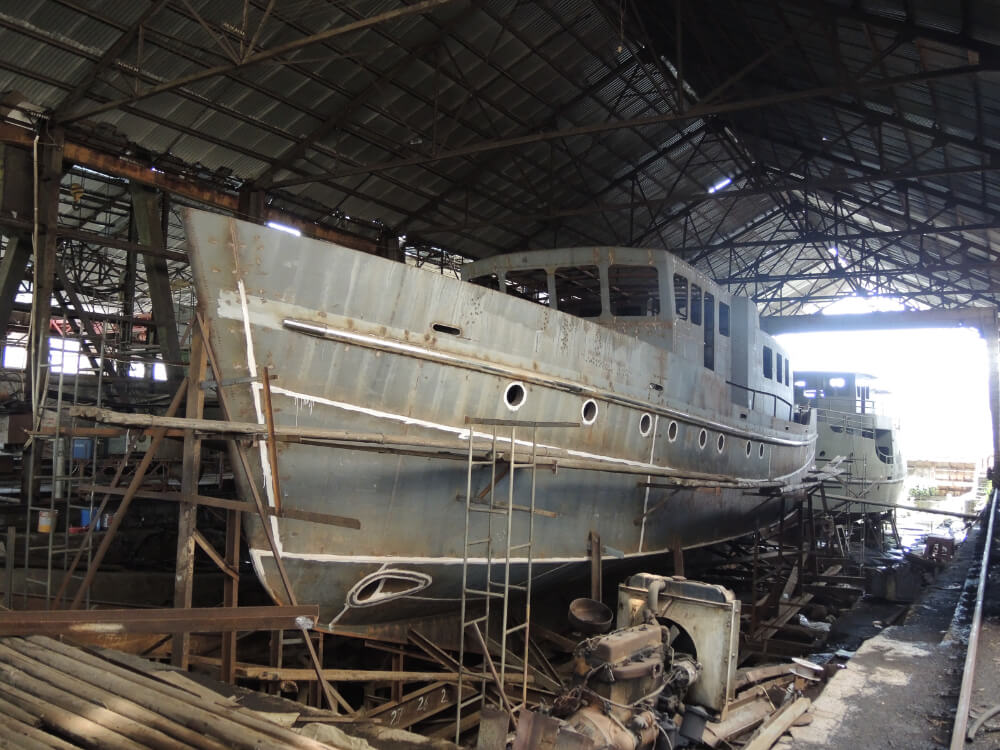
I had some concerns about the “made in China” label but Bill and Stella helped allay those concerns by offering to build it in full RINA survey for unrestricted worldwide navigation. I also employed Don and his partner Jane as project managers. Jane was a former employee of Sea Horse Marine. The keel was laid in the graving yard in December 2013 at Sea Horse Marine in the town of Doumen.
36 MONTHS…YEAH RIGHT!
The contract stipulated a build time of 36 months but Strannik was to take more than 5 years. It is a common theme with everybody we have spoken to who have had Diesel Ducks built at Sea Horse Marine, they are never completed on time. Stella told me in a recent email that they have addressed this question and are aiming to finish everything within the stipulated contract period. However, I don’t think the problem of late delivery is unique to their yard.

Strannik was in part delayed by the fact that the Chinese Government terminated Sea Horse’s lease on the shipyard in Doumen and they were forced to shift everything including the vessels under construction, workshops and equipment to a new yard some five miles away which they had purchased some years previously, but not prepared, in anticipation of the termination of their lease.
The delays in Strannik’s build were further compounded by building in RINA survey, as all the drawings and plans and any modifications to them had to be submitted to RINA’s Korean office for comment and approval and all material and equipment used in the build had to be approved by RINA then sourced from approved suppliers, not always an easy task in China.
In August 2018 Don and Jane had to move on to other commitments, they were organising the 2019 Golden Globe yacht race and had to relocate to France. Fortunately, I had passed the ownership and management of my Expedition Travel Companies to my sons in April 2019 and was free to travel. Simon Truebridge, who I had recently employed as an engineer for Strannik, a young crew member and I relocated to China in an attempt to try and get Strannik finished and launched. We lived there for 7 months, initially in a hotel and then onboard Strannik. We cajoled, we pleaded, we encouraged, we ordered, we instructed and we demanded but promised delivery dates came and went.

We engaged lawyers to sort out a major problem with the RINA regulations over the amount of sail area we were allowed before we had to meet sailyacht stability standards, something that Strannik was never designed to do. The problem was that there was a decimal point in the wrong place in the 2013 regulations which meant we could only have 1.84 square meters, instead of 184sq metres. The ridiculousness of this wasn’t lost on the RINA inspectors but rules were rules apparently. The new 2019 amendments corrected the mistake but didn’t help us because our project had been started under the 2013 regulations. It was eventually resolved. This was one of many battles we had to fight.
ON THE WATER
The last battle was the export of the vessel from China and we had to concede defeat on that one. We wanted to sail it to Hong Kong but under China Customs law no new boat can sail from China “on her own bottom”. That translates to it must be towed. A tug was duly hired and it left China with Strannik in tow on the 23rd March 2019, and we went by ferry and met them in Hong Kong.
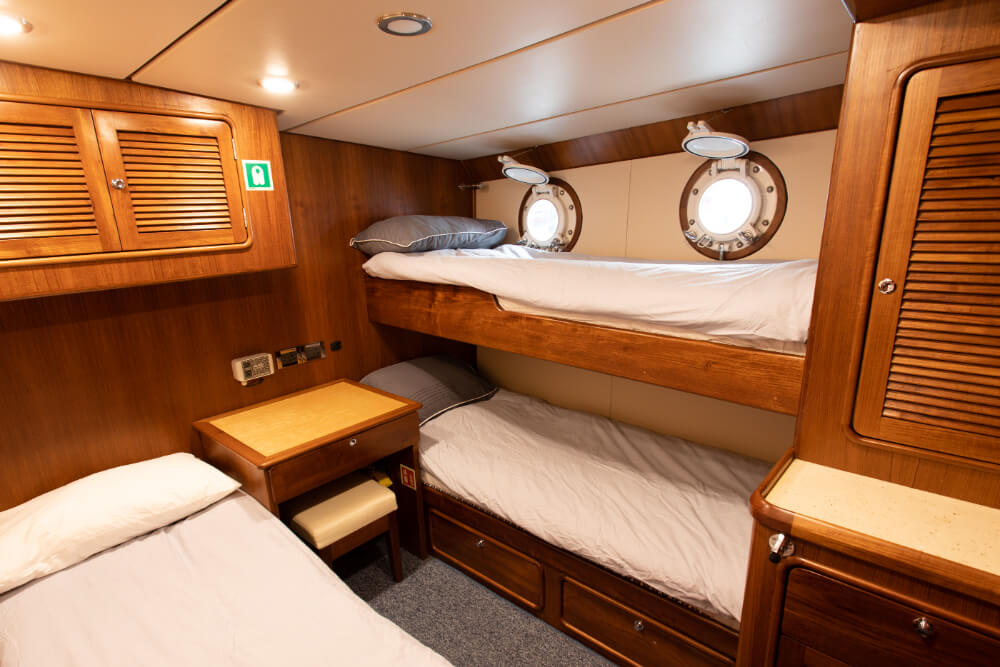
It was a huge relief to be out of China but the build wasn’t over yet. In Hong Kong, we anchored at Hebe Haven yacht club (great club and great people) and we spent the next 4 months working with On Board Marine Group (a group of NZ guys who have set up business in Hong Kong, at least we spoke the same language), to install and commission the electronic gear which we hadn’t been allowed to import into China or had been unable complete installation of before departure. We also had to go into a queue for a space in the Hong Kong shipyard to haul Strannik out to make some adjustments to the propeller so we were able to meet the engine manufacturer’s specifications (1900 rpm @ WOT) as stipulated in the contract.
In dry dock, we completed the final RINA “out of water” survey, renewed the antifoul, trimmed and refitted the propeller. Strannik is registered in Arutanga in the Cook Islands and all that remained to be done once we were back in the water was for the local Cook Island Surveyor to complete his survey.
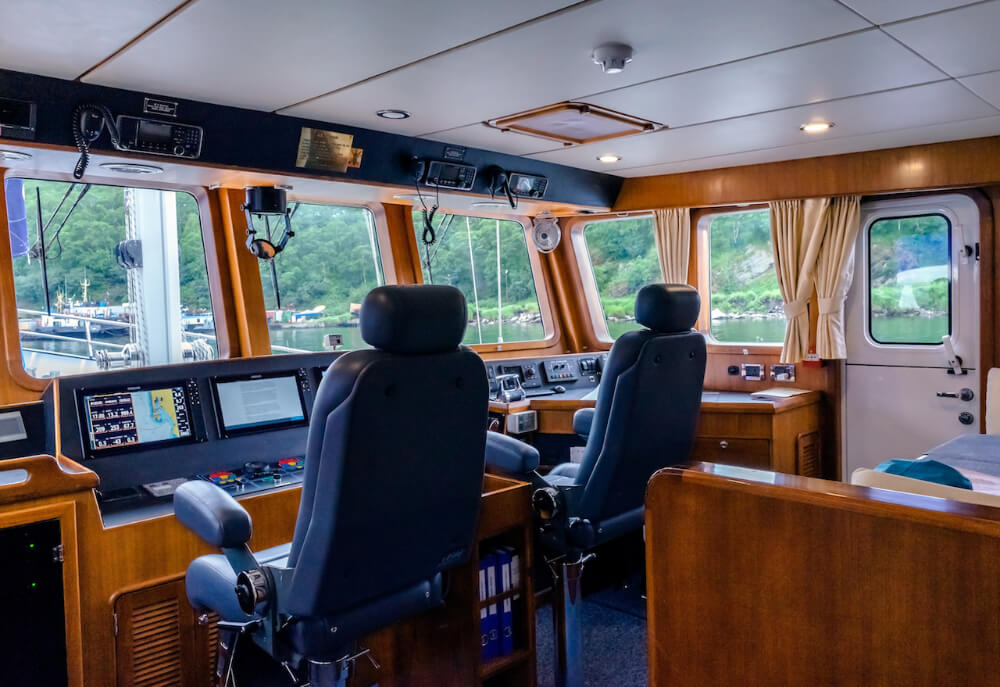
We sailed from Hong Kong on July 20th, 2019, 5 years and 7 months after the keel was laid on what was to become one of the longest and demanding maiden voyages of any Diesel Duck and vessel from the Sea Horse Marine yard. The first port of call after leaving Hong Kong was Pusan and from there we sailed via the Tsugaru Strait, along the Kuril Islands to the Russian port of Petropavlovsk-Kamchatskiy. Although I don’t speak Russian, I have spent a lot of time in the Russian Far East. My Russian friends who know me too well suggested the name Strannik for the ship. It means wanderer or pilgrim. The ship’s bell was a present from these very dear friends.
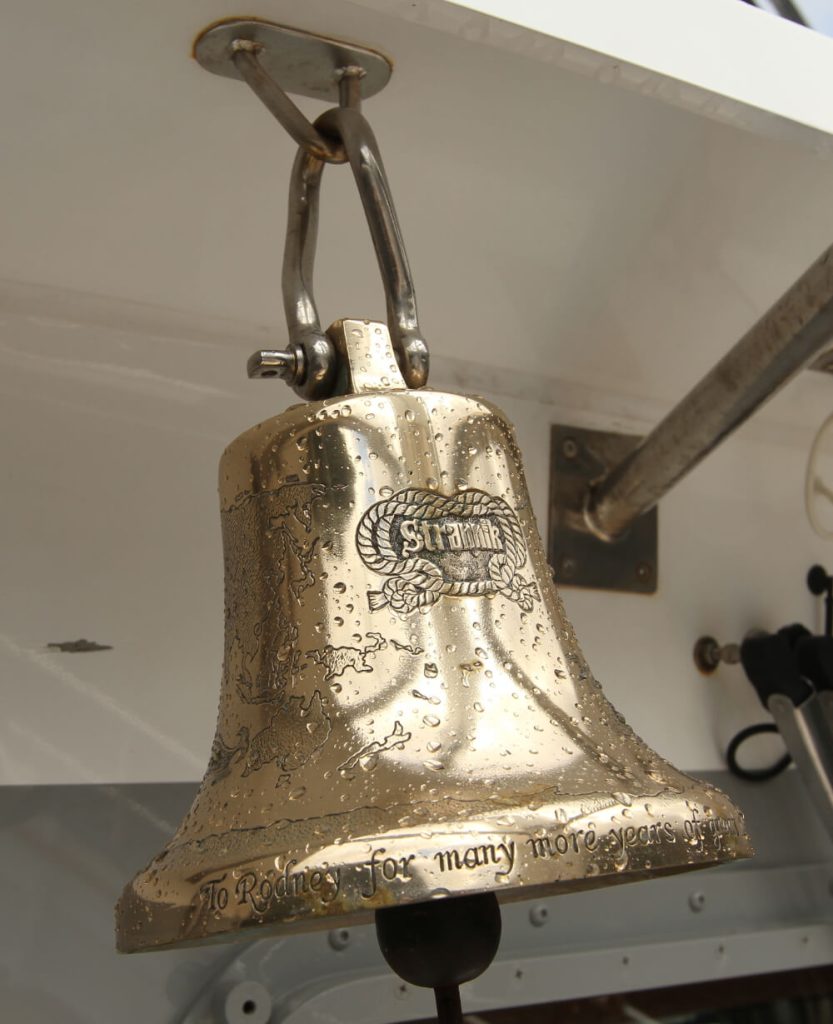
Strannik has an economical cruise speed of approx. 8 knots for 5000 miles, with a standard cruise 8- 8.5kts over 4000 miles, and with sails it is obviously unlimited. Max speed 10.5Kts.
The journey north was the culmination of a long-held dream and Strannik was the boat that would allow me to fulfil these dreams. However, dreams are dangerous things, they require persistence, tenacity and antifouling on a regular basis. Most importantly of all, dreams are worth it.
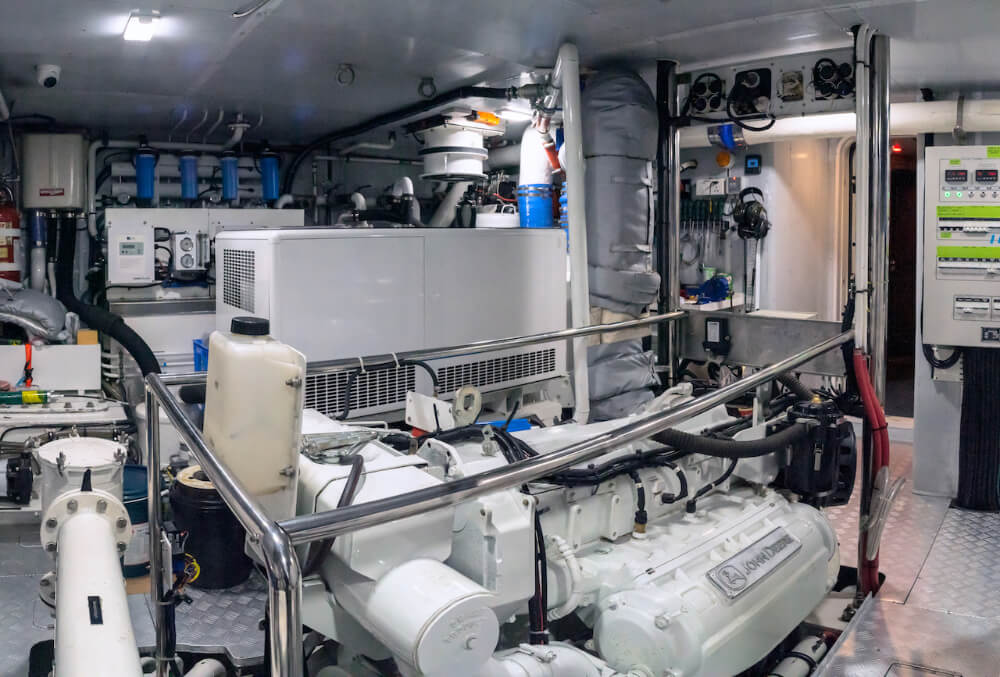
MV Strannik
- LOA: 23.7 metres
- Beam : 6.2metres
- Draft: 2.47metres
- Displ: 131 Tonnes
- Construction: Steel hull, deck, pilothouse with fiberglass fly-bridge.
- Sail area: Total 174 sq. metres.
- Main Engine: John Deere 6135AFM75 M2 @ 425HP
- Generators: 2 x Northern Lights 26 KW.
- MFDs: Simrad
- Air Con: Cruisair
- Thrusters: Side Power
- Stabilisers: Naiad
- Fuel: 15,500 Litres
- Water: 8500 litres.
- Class: RINA C* HULL: MACH Ych (MCA) Unrestricted Worldwide Navigation.




